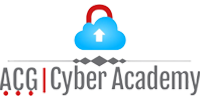C)HT/C)OST: Certified Hardware Technician & Operating Systems Technician

Target group
• Anyone
Description
The C)HT and C)OST courses will kick start your career in the IT field by providing the foundational knowledge needed to install, configure, and support computer hardware systems and operating systems. The C)HT will also provide an understanding of the fundamentals of networking and security/forensics; properly and safely diagnosing, resolving, and documenting common issues; as well as applying troubleshooting skills. The Certified Operating Systems Technician, C)OST course builds on the C)HT course by focusing on operating systems; this includes installing, configuring and maintaining devices, PCs, and software for end users; understanding the basics of networking and security/forensics from the operating system view. Properly and safely diagnose, resolve, and document common software issues. Apply troubleshooting skills, and providing appropriate customer support. We will cover virtualization, security, desktop imaging, and deployment. You will also learn the security foundations needed for the various operating systems.
Program
- Duration : 5 days
C)HT Detailed Outline:
Chapter 1: Troubleshooting
- Section 1: Troubleshooting theory
- Section 2: Safety
Chapter 2: Motherboards and CPUs
- Section 1: Motherboards
- Section 2: CPUs
Chapter 3: Computer Power Supplies
- Section 1: Power supply connectors
- Section 2: Power supply installation
- Section 3: Power supply troubleshooting
Chapter 4: Memory
- Section 1: Read-only memory
- Section 2: Random access memory
Chapter 5: Computer Expansion
- Section 1: Expansion interfaces
- Section 2: Expansion card installation
- Section 3: Connectors and cables
Chapter 6: Physical Storage
- Section 1: Disk drives
- Section 2: Redundant array of independent disks (RAID)
- Section 3: Optical drives
- Section 4: Other storage methods
Chapter 7: Input-Output Devices
- Section 1: Input devices
- Section 2: Output devices
- Section 3: Dual input-output devices
Chapter 8: Display Devices
- Section 1: Display types
- Section 2: Display installation
- Section 3: Display troubleshooting
Chapter 9: Network Cables and Connectors
- Section 1: Twisted-pair connections
- Section 2: Coaxial connections
- Section 3: Optical media
Chapter 10: Mobile Devices
- Section 1: Mobile device types
- Section 2: Mobile device troubleshooting
Chapter 11: Printers and Multifunction Print Devices
- Section 1: Printer technologies
- Section 2: Printer installation
- Section 3: Printer maintenance
- Section 4: Printer troubleshooting
Chapter 12: Custom Computers
- Section 1: Wi-Fi standards
- Section 2: Wireless encryption
Chapter 13: Operational Procedures
- Section 1: Environment
- Section 2: Safety
- Section 3: Content Privacy
- Section 4: Professionalism
C)OST Detailed Outline:
Chapter 1: Operating Systems
- Section 1: Windows versions and features
- Section 2: Windows installation and upgrades
- Section 3: Non-Windows operating systems
- Section 4: Applications and Scripting
Chapter 2: Windows Management
- Section 1: Operating system features and tools
- Section 2: Control Panel utilities
- Section 3: Command-line tools
- Section 4: Troubleshooting
Chapter 3: Network Basics
- Section 1: Classifying Networks
- Section 2: Network Devices
- Section 3: Internet Connections
Chapter 4: Network Protocols
- Section 1: TCP/IP Settings
- Section 2: Transport Protocols
- Section 3: Application Protocols
Chapter 5: Wireless Networking
- Section 1: Wi-Fi Standards
- Section 2: Wireless Encryption
Chapter 6: Windows Networking
- Section 1: Sharing and Security
- Section 2: Network Connections
- Section 3: Connection Troubleshooting
Chapter 7: Virtualization and Cloud Computing
- Section 1: Virtualization
- Section 2: Cloud Computing
Chapter 8: Security Principles
- Section 1: Threats and Vulnerabilities
- Section 2: Security Controls
Chapter 9: Security Technologies
- Section 1 : Operating System Securities
- Section 2 : Security Hardware and Software
Chapter 10: Securing Devices and Data
- Section 1: Workstation Security
- Section 2 : Mobile Device Security
- Section 3 : Security Troubleshooting
Chapter 11: SOHO Network Configurations
- Section 1 : SOHO Router Features
- Section 2 : Network Security
Goal
Upon completion, the Certified Hardware Technician and Certified Operating Systems Technician candidate will be able to competently take the C)OST & C)HT exams well as the CompTIAA+ 220-1002 exam.
Tarif
- 2250 €
- Langue : Anglais
- Niveau : Level 100
- Organisme de certification : Mile2
- Certification : Oui
- Accesibilité : Oui
- Durée : 5 Jours
Information importante :
Nos formations ne sont pas inscrites au Répertoire National des Certifications Professionnelles (RNCP), mais elles sont conformes aux exigences du Répertoire Spécifique (RS).
